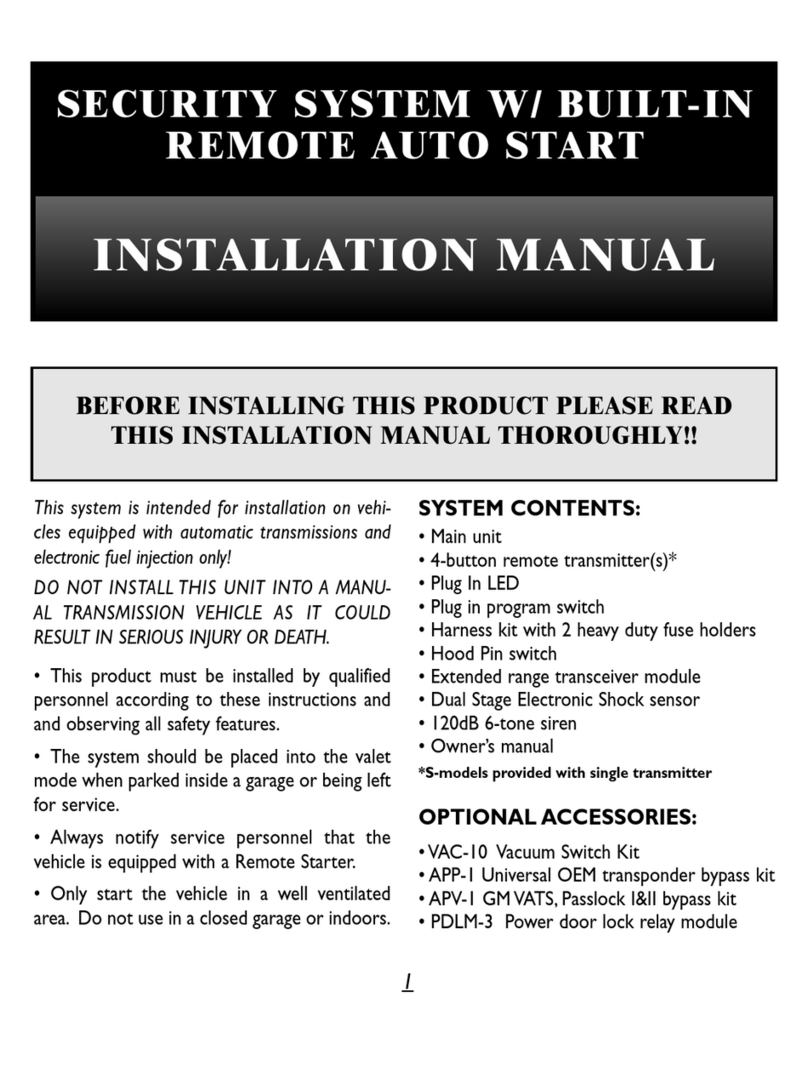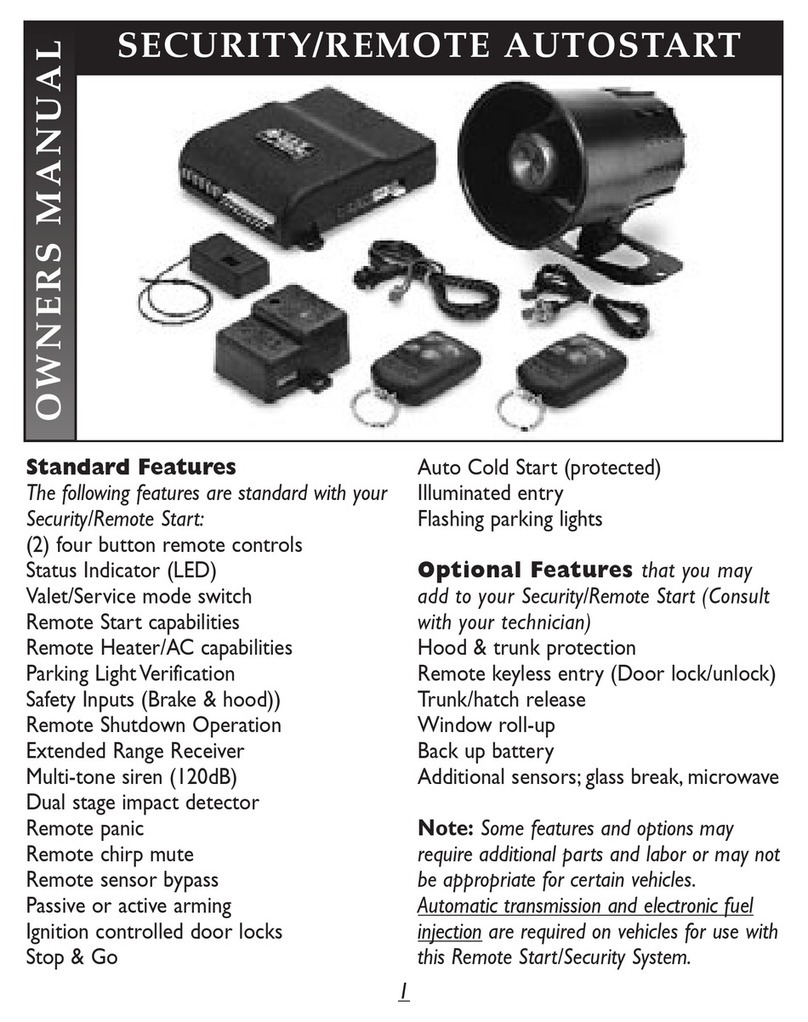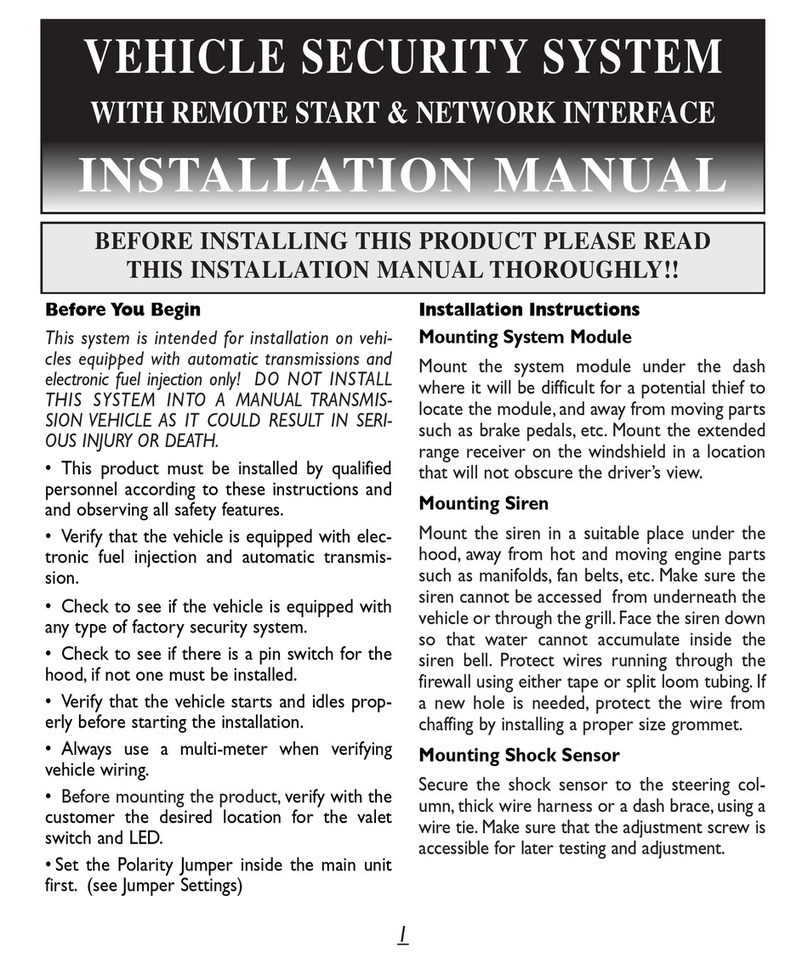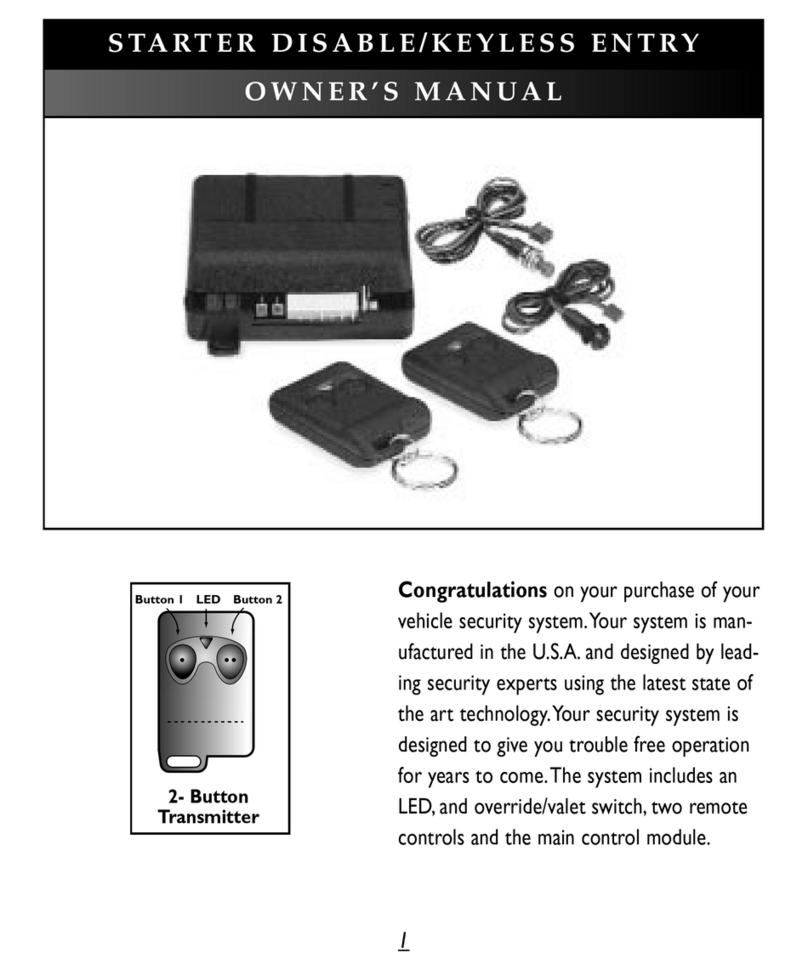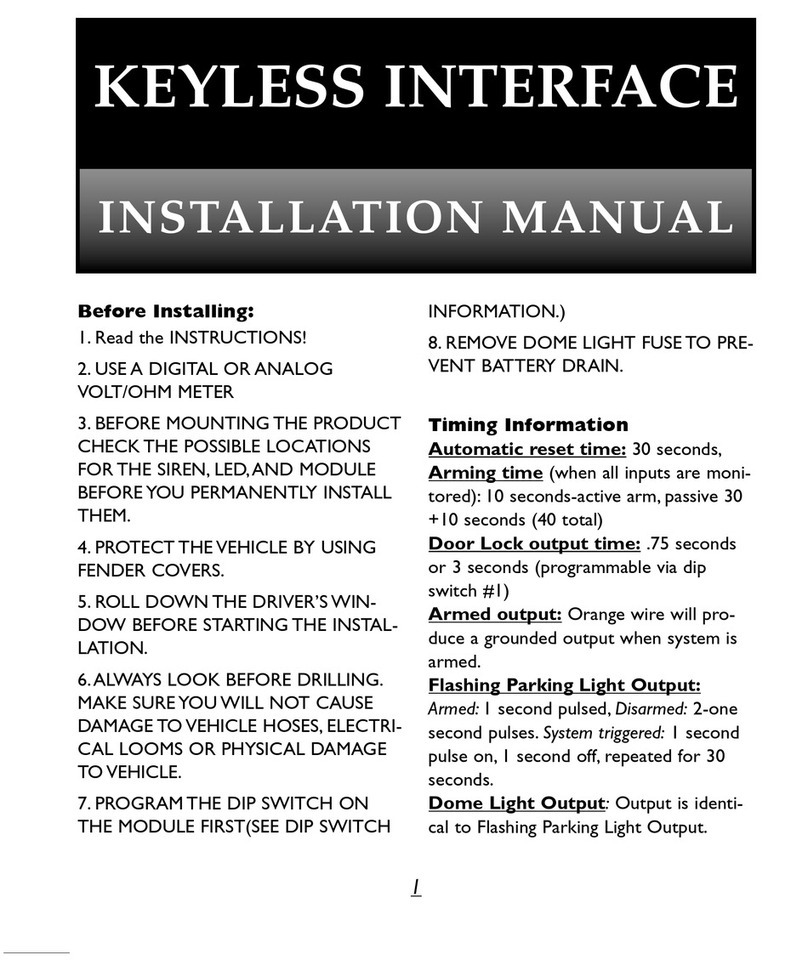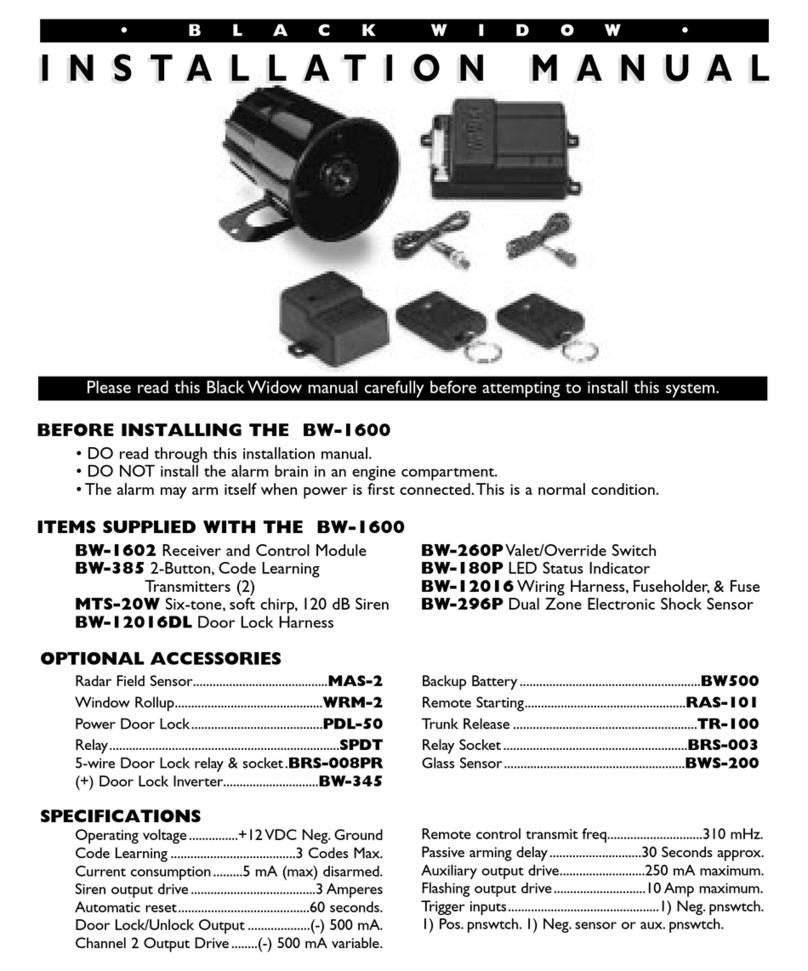4
Using Valet/Override Switch
Valet Mode: If the system is pro-
grammed to passively arm (dip switch #4
On), and you wish to keep system from
arming but wish to retain keyless entry
features: 1. Disarm the system, 2. Turn
ignition to on, 3. Press and hold
valet/override switch for approximately 3
seconds, 4. LED will turn on solid.
To exit Valet mode: Repeat procedure,
LED will turn off momentarily, siren will
chirp twice.
Emergency Override: If you lose your
remote or it becomes inoperable, and
system is armed: 1. Open door and enter
vehicle (Siren will sound, lights will flash).
2. Turn ignition key to on, 3. Press the
override switch, 4. System will disarm,
and automatically enter Valet mode,
regardless of whether system is pro-
grammed to passively or actively arm.
Code Learning Mode: If you wish to
‘teach’ the system different remote con-
trols:
1. Make sure system is disarmed or in
valet mode,
2. Turn ignition switch on 3 times within
5 seconds and leave in the on position
(ON, OFF, ON , OFF, and ON), you will
hear one chirp from the siren, LED will
flash one time,
3. Within 5 seconds press and hold
valet/override switch for approximately 5
seconds, you will hear a series of chirps
and LED will turn on solid,
4. Release the valet switch, and within 5
seconds you must press all of the arming
buttons on all Transmitters that you
desire to operate the system. You will
hear a chirp after the system has learned
each remote control. The system will
hold 3 different codes in memory.
NOTE: Once you enter the code learn-
ing mode, the system will throw out any
previous programmed remotes. If you are
programming two remotes with the same
code, the system will acknowledge only
the first remote. Even though both
remotes will operate the system.
Multi Car Operation: If you are using
a remote to control two vehicles (the
second button to operate the second
vehicle) Button #2 will only operate
arming and disarming features on the sec-
ond vehicle only. 2nd and 3 rd Auxiliary
channels will not function. Since the trans-
mitter is 3 channel, you could operate up
to three different vehicles with a single
remote. (Buttons 1, 2 and 3)
